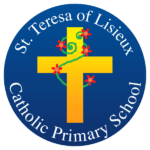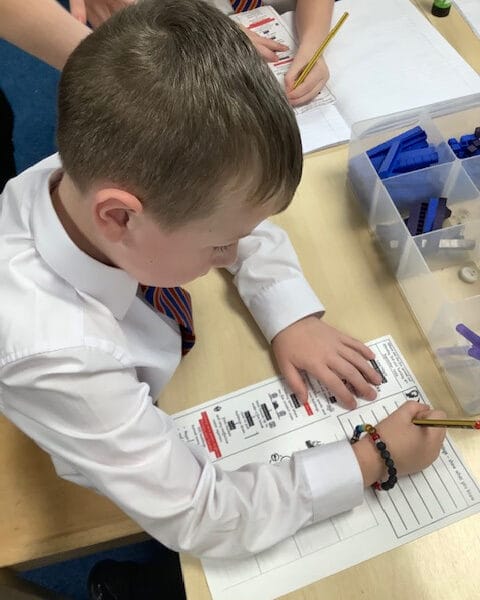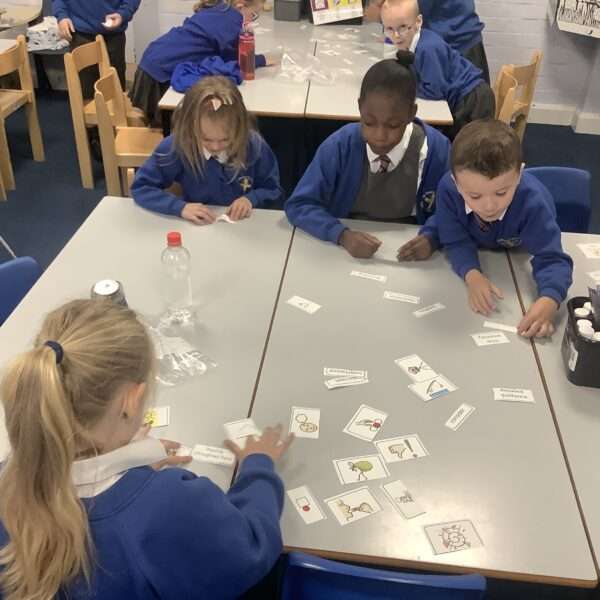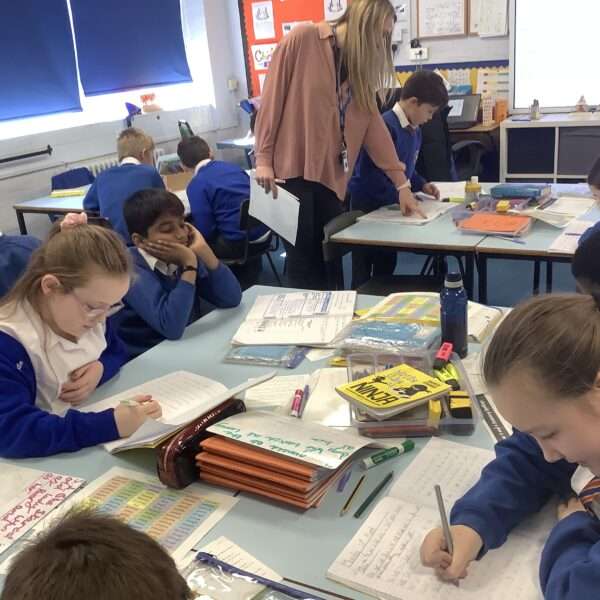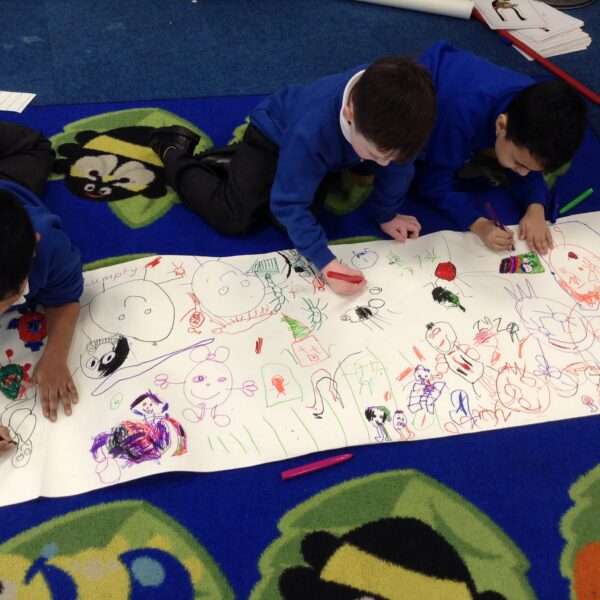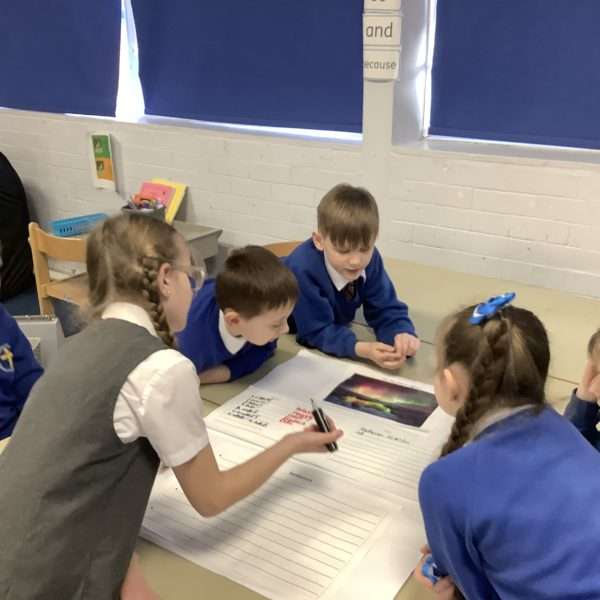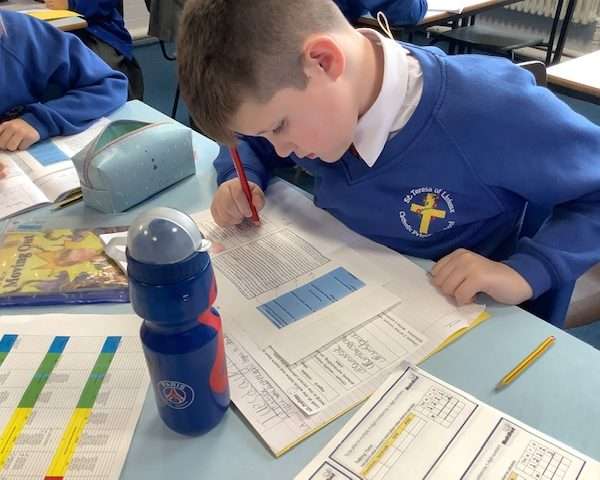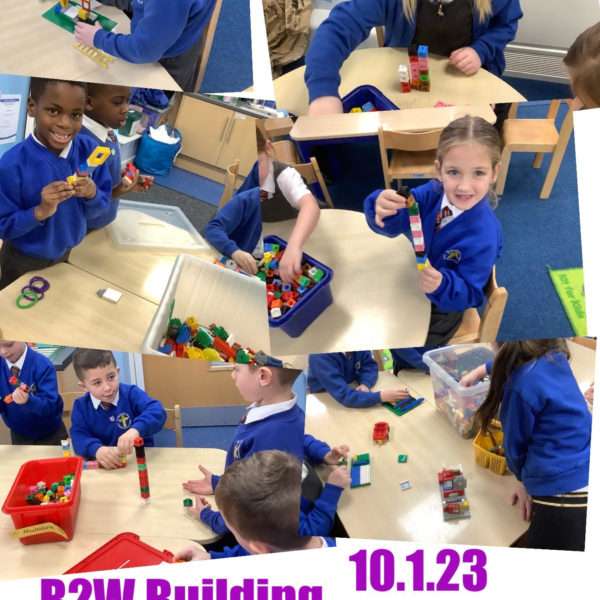This website uses cookies so that we can provide you with the best user experience possible. Cookie information is stored in your browser and performs functions such as recognising you when you return to our website and helping our team to understand which sections of the website you find most interesting and useful.
Writing Curriculum
Intent
At St Teresa of Lisieux, our English Writing Curriculum is designed to inspire and develop children’s – love of reading and writing; oracy and discussion; and prepare children to succeed in school and life – becoming successful and socially responsible adults of the future.
We understand the importance of effective communication and language skills, which begin with our youngest children, to support children’s learning, raise attainment in all areas of the curriculum and develop pupil’s confidence, articulacy and independence. Being able to communicate through both spoken and written language is vital to improving the outcomes of all children in our school.
By the end of Year 6, we intend our children to have developed a love of writing and to be able to express their thoughts and ideas clearly and creatively through the written word. We also intend to create writers who can re-read, edit and improve their own writing, and enable pupils to be able to confidently use the essential skills of grammar, punctuation and spelling. We set high expectations for all our children to take pride in their work.
The school prioritises reading and, as such, reading is central to the whole curriculum – with exposure to quality texts from a range of authors and covering a range of themes is central to the teaching of English.
Through using high-quality texts, immersing children in vocabulary rich learning environments and ensuring curriculum expectations and the progression of skills are met, our children will be exposed to a language rich, creative and continuous English curriculum which will not only enable them to become primary literate but will also develop a love of reading, creative writing and purposeful speaking and listening.
Through this approach the school is able to draw upon the wider curriculum, which supports our rich, ambitious, rigorous, engaging and authentic curriculum.
Implementation
In order to help us to develop confident, enthusiastic writers who can express themselves in a variety of different styles and across a variety of contexts, our teaching of writing is often cross curricular and linked to our class themes and REAL projects. This provides our children with regular opportunities to write for a range of purposes and audiences. In English Writing lessons, we use the Literacy Counts; Read to Write units to ensure clear expectations and progress across the school, this ensures that all elements of the National Curriculum are met and that children are provided with a Writing curriculum based on evidence-based research to help them to fulfil their potential.
Literacy Counts: Read to Write empowers our teachers to provide high-quality teaching of writing through children’s high-quality literature (Core Texts). The units of work centre on engaging, vocabulary-rich texts, with a wealth of writing opportunities. Several of these carefully selected Core Texts have strong thematic links to the Science, History and Geography curriculum. They are implemented with great success because they include:
- Clear Sequential Episodes of Learning
- Example Texts (greater depth WAGOLL)
- Learning Objectives that link to the teaching sequence (Immerse, Analyse, Plan, Write)
- Vocabulary Learning
- Contextualised Spelling, Grammar & Punctuation
- Writer’s Knowledge Linked to National Standards
- Sentence Accuracy Work Linked to National Standards
- Progressions Documents with Year Group Expectations
- Reflecting on Unit Outcomes: Planning for Next Steps
- Example Planning Format
- Wider Reading for the Wider Curriculum
- A Wealth of Resources Linked to the National Standards
- Explicit Links to the National Curriculum
Read to Write is evidence-based teaching of writing. These units have been carefully mapped out so the entire statutory curriculum for writing is covered for each year group.
Although we believe that there is a strong link between reading and writing – that successful writers must first become successful readers – we also recognise that these are ‘opposite sides of the same coin’. As such, all children from Reception – Year 6 have separate, daily, reading and writing lessons. Literacy Counts; Read to Write was chosen carefully to support the school’s approach to reading whilst allowing us to deliver a robust and ambitious writing curriculum.
